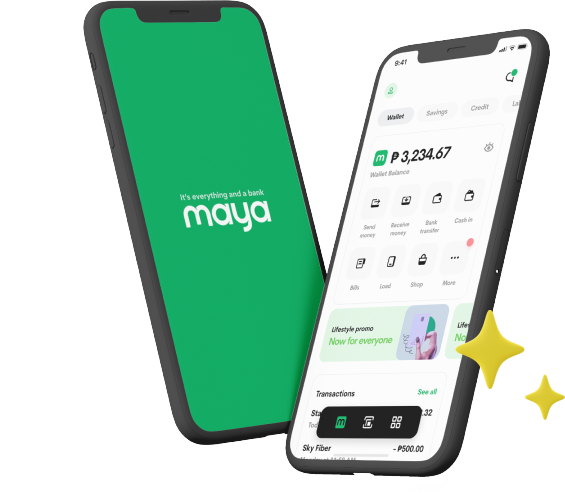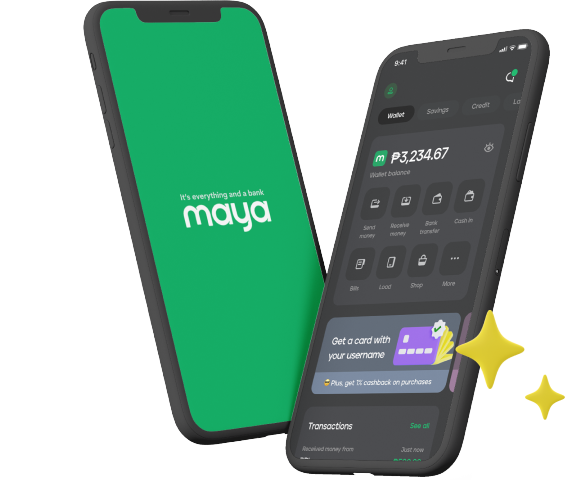With the rise of digital payments, managing money today has become more dynamic than ever. Gone are the days when people relied solely on cash to cover their daily expenses. Today, it’s common for people to use their credit cards when making larger purchases. Additionally, they can use their e-wallets like the Maya Wallet to pay bills, buy mobile load, and purchase online That’s because the Maya ecosystem offers more than just a digital e wallet; it’s also bona fide digital bank that lets you open your own Maya Savings account and easily transfer funds to and from your Maya Wallet. Moreover, because Maya is a Bangko Sentral ng Pilipinas-supervised financial institution (BSFI), funds deposited in Maya Savings are insured by the Philippine Deposit Insurance Corporation (PDIC) up to PHP 1,000,000 per depositor.
While using several payment methods offers plenty of convenience, going cashless still requires you to keep track of where your money is going. Knowing how much you’ve spent, and on what, helps you manage your budget more effectively and avoid going over your limits without realizing it.
If you’re aiming to take better control of your finances, here are some practical tips to help you track your spending across multiple payment methods.
1. Check Your Transaction History Regularly
With several payment methods in play, it’s important to get into the habit of reviewing your financial records regularly. For credit cards, bank statements provide a detailed overview of your spending, while e-wallets offer accessible transaction histories that are easy to browse on their dedicated app. This real-time visibility reduces the chances of overspending and keeps you aware of your cash flow.
Even with the robust safety features offered by Maya, the #1 digital bank in the Philippines,, users should still make it a habit to check their transaction history at least once a week. This way, you can quickly catch any unfamiliar or unnecessary charges and report them immediately.
2. Categorize Your Expenses by Type and Payment Method
Another practical strategy to track your spending is by organizing your expenses according to their purpose and the payment method used. For instance, you might have categories like transportation, groceries, dining, utilities, and leisure. Within each category, specify whether the payment was made via cash, credit card, debit card, QR Ph, or e-wallet. Doing this provides a clearer picture of how your spending is distributed across both categories and payment tools.
3. Identify Which Areas You Spend the Most On
After organizing your expenses, the next step is analyzing which areas consume the most of your income. This insight is valuable because it highlights where adjustments might be needed. Perhaps you’re spending too much on takeout through your e-wallets, or maybe your credit card statements reveal a pattern of frequent impulsive shopping during online sales.
Identifying these high-cost areas helps you make informed decisions, such as limiting unnecessary subscriptions or setting spending caps for certain categories.
4. Gamify the Tracking Process to Stay Motivated
To make expense tracking more enjoyable, consider turning it into a game. You can set weekly or monthly challenges like limiting food delivery to a specific budget or saving a set amount every time you avoid an impulse buy.
For families or couples, this can become a bonding activity. For example, whoever saves the most for the month gets to choose the next takeout meal or movie. Gamifying your financial habits adds a layer of motivation and turns a potentially dull task into something engaging and rewarding.
5. Set a Weekly or Monthly Review Session
Finally, dedicate time to reflect on your overall spending. A weekly or monthly review allows you to assess whether you stayed within budget, track progress toward savings goals, and make any necessary adjustments for the following period. This session doesn't have to be lengthy. It can be just a 15-minute sit-down at the end of the week.
If you manage a household budget, involve your spouse or kids to instill financial literacy in the family. These review sessions create space to realign your financial plans and spot any deviations.
Navigating daily life with various payment options is convenient, but it also calls for greater accountability. With the suggestions mentioned above, you can confidently manage your finances without feeling overwhelmed. Ultimately, it’s not about restricting your lifestyle. Instead, it’s making intentional choices that help your money work smarter and go further.
You might also like
These Stories on E-Wallet




